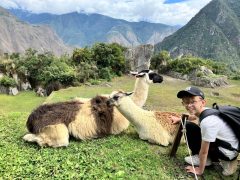An Insider’s Guide to the Amazon

Advice from a panel of Journey Latin America's Experts
For many the seemingly impenetrable wilderness of the Amazon, sprawling across half of South America's vast territory, conjures an unrivalled sense of adventure that taps into some of their very earliest images of the exotic. However, for those wishing to make childhood dreams a reality and visit this unique environment for themselves, it can be hard to know where to begin. To unpick the key questions and make sense of all the options, we've put together a panel of experts who can draw on their own broad experience of travel within Amazonia to give you the inside track on nature at its most vivid and untamed.
WHERE TO GO
The Amazon rainforest covers parts of a total of nine nations, so your first decision when planning a visit is typically going to be choosing between the different countries. The most popular choices for Amazon holidays are Peru, Brazil and Ecuador, and these are also where the standard of jungle lodges and quality of guided excursions is highest. The good news is that there is relatively little difference between the rainforest experiences you will have in any of those three countries, so the best way to choose will almost always come down to the other regions or specific attractions you wish to visit on your trip. The main exceptions are if you have specialist interests, for example ornithology (in which case you will probably find the Peruvian Amazon the most rewarding) or anthropology (Ecuador has the most community-focused approach), or want to see a particular species such as the pink river dolphin (frequently seen around Kapawi Lodge in Ecuador).
David Nichols, Product Manager
It's usually most sensible to base your choice around the rest of your itinerary and your flight connections. However for those who are very serious about natural history or who want the 'ultimate' Amazon experience, in my opinion there is nowhere better than the Manú National Park in Peru, not to be confused with the Manu Biosphere of which the national park is only a small part. Manú National Park is an exceptionally well-protected area of pristine primary forest offering the fullest variety of habitats and experiences, including a large macaw lick, a tapir lick, an oxbow lake (the best place to spot giant river otters) and a canopy tower. It can be reached overland from Cusco, making for an adventurous journey that conveys the sheer geographical diversity of Peru as you travel down from the High Andes through misty cloud-forest and finally into the dense cloak of the rainforest. Of course, visiting this remote area does not come cheap and the standard is also quite basic, so it's not going to be right for everyone.
Ben Line, Senior Travel Consultant, Tailor-made Holidays
Where to go really depends on what you are looking for, but there's no wrong answer: if it's your first visit you are sure to be bowled over by the sumptuous, primordial landscape of the Amazon no matter the precise area you choose. Those who simply want a taste of the jungle will be more than satisfied by the most accessible areas, which centre around Puerto Maldonado in Peru or Coca in Ecuador. On the other hand if the primary motivation of the trip is to really penetrate the remote rainforest and observe its wildlife, Manú National Park and the Tambopata Research Centre are good choices, as is Cristalino Lodge in Brazil's southern Amazonas. A third type of traveller, desiring to see the Amazon in a more luxurious style, should be guided by the choice of lodge or cruise rather than the areas themselves – Anavilhanas Lodge in Brazil, Inkaterra Reserva Amazonica in Peru or the Aqua and Aria Amazon cruise boats would be well-suited, for example.
Claire Milner, Client Information Manager
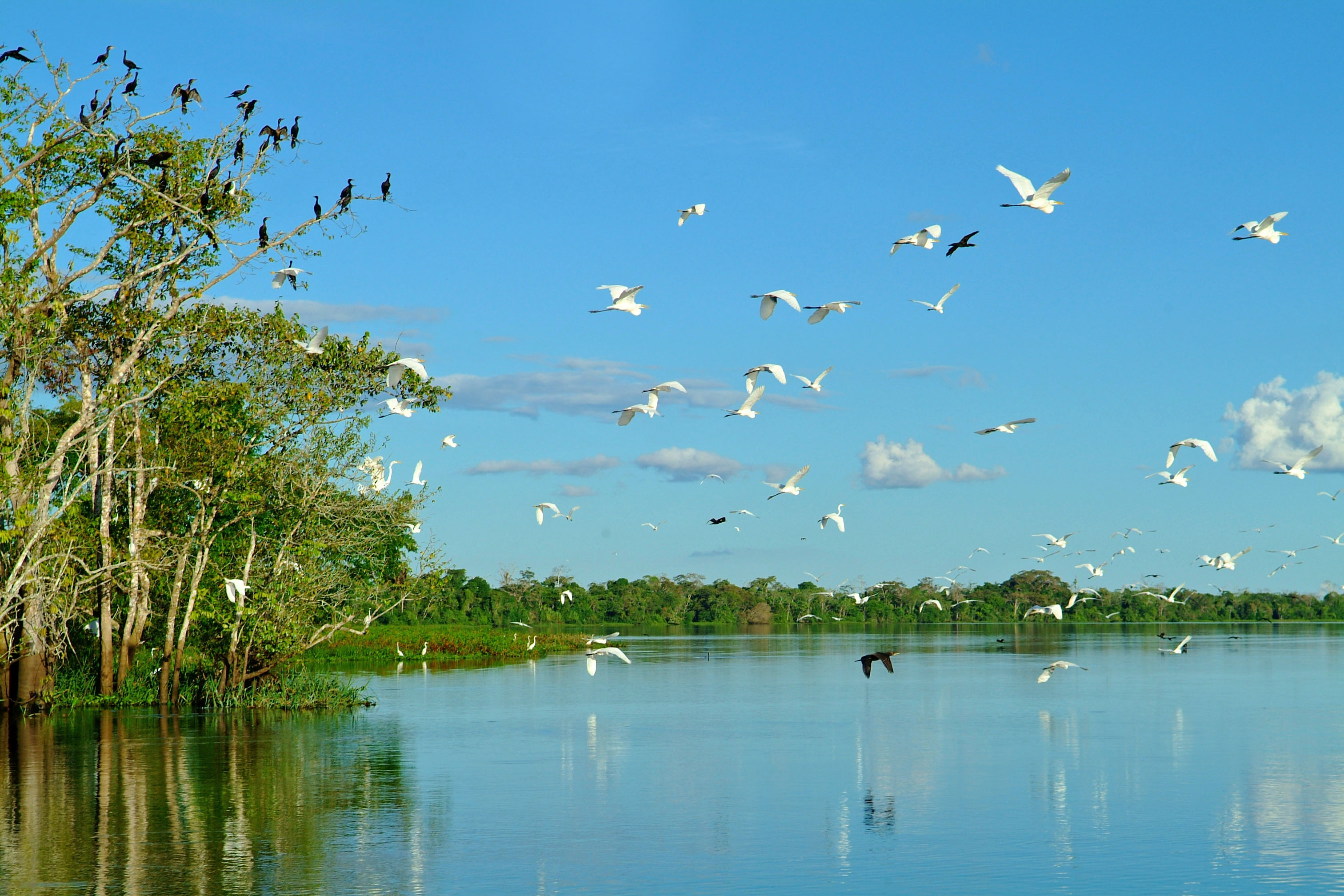
WHEN TO GO
Brazilian Amazon
Although Amazonian weather does fluctuate with the seasons, the key factor to bear in mind is in fact the water level. This takes on greater significance in the Brazilian Amazon due to issues of accessibility: between July and December river levels fall, making it somewhat harder to get around by boat and often lengthening transfer times to and from your lodge. More of the excursions will revolve around on-foot exploration at this time of year. It is also hottest in July and August, making these the least ideal months to visit, although I would not let that put you off if it's the only time you can go.
Peruvian and Ecuadorian Amazon
The Amazon really is a year-round destination so most people are more swayed by weather factors affecting other parts of their holiday. If the Amazon is the main focus of your trip to Peru or Ecuador, you could consider timing your visit to coincide with lower river levels, which can be expected from mid-May until around October. When the water is low, river banks and tree roots are exposed and you'll typically see more river life like caimans, otters and maybe even anacondas. Macaw licks are also more active. Unfortunately though, at this time of year you do run the risk of encountering one of the occasional cold snaps known as friaje, which aside from being chilly can send wildlife into temporary hiding. (Note: conditions in Brazil are completely different, see above.)
WILL I SEE A LOT OF WILDLIFE?
I wouldn't advise going to the Amazon purely for the wildlife – if that's your main interest, you may find that Brazil's Pantanal wetlands have more to offer. While clearly there is no shortage of fauna in the world's largest rainforest, the thick mantle of vegetation that smothers every available inch of land offers an endless array of hiding places, and glimpses of mammals are more often than not fleeting or partially obstructed by foliage. Having said that, you will very much feel the presence of the abundant life that surrounds you at every moment. You'll be dazzled by the bold plumage of parrots flying overhead, see and hear monkeys leaping through the treetops, and fall asleep to a rhapsody of animal and insect sounds. And when you do spot something, it's unbelievably exciting!
For me the thrill of trying to spot the wildlife, whether in between branches and leaves or from far away, is all part of the experience and makes each sighting all the more rewarding. The guides are always extremely good at spotting, identifying and pointing out the different species, and you will almost certainly see a good variety of fauna – the main difference from the Pantanal is that in the Amazon you usually see it from further away and/or for a shorter time. However there is always plenty of interest, whether that be unusual insects, the sounds of nature or amazing plants and towering trees. And just feeling that thick jungle heat or getting drenched in a sudden rain shower are enough to impress upon you what an extraordinary privilege it is to set foot in the Amazon.
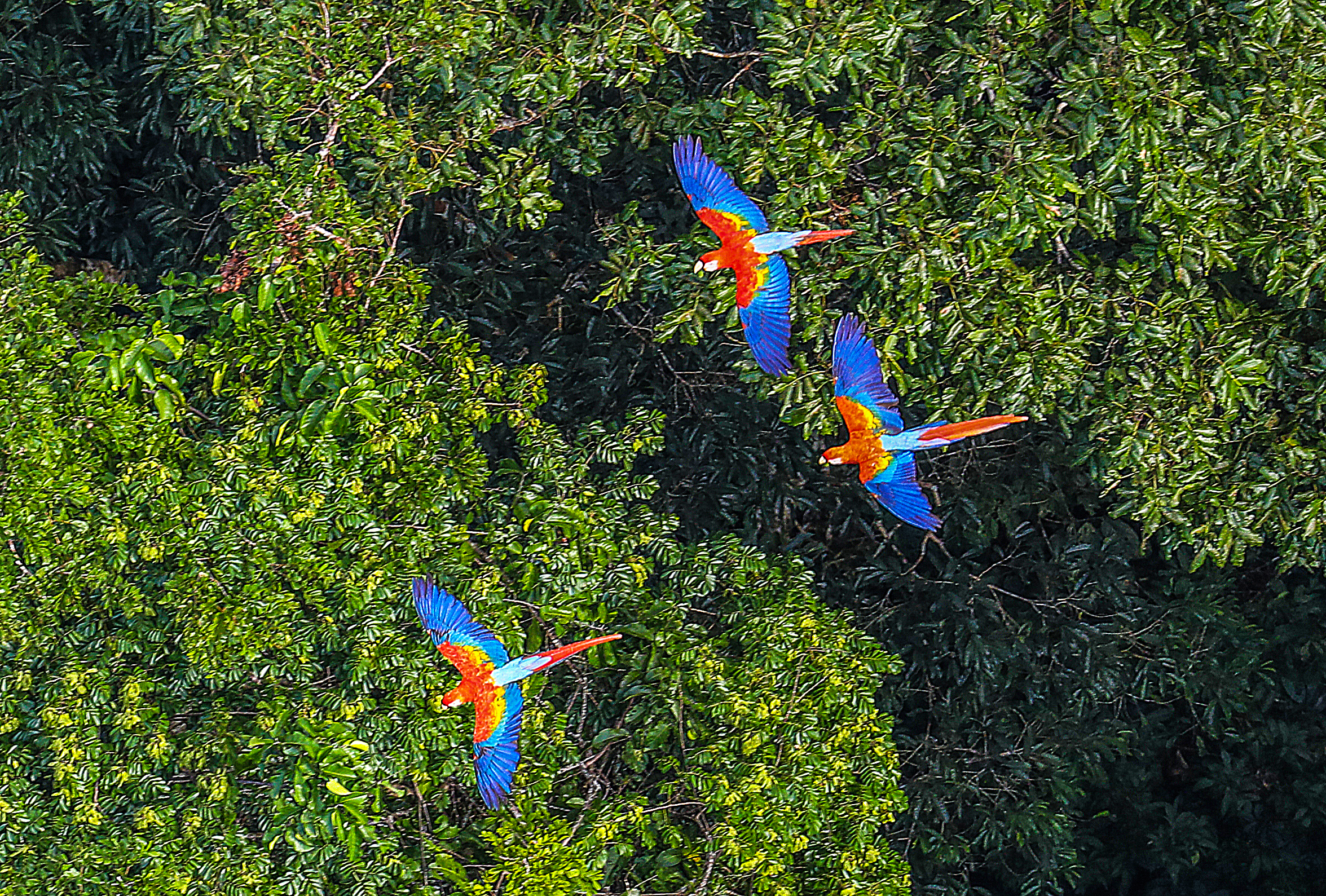
JUNGLE LODGE OR RIVER CRUISE?
Often clients who take an Amazon river cruise are those planning to spend longer in the jungle, perhaps five nights or more, and vessels range from traditional Amazonian river boats like the Manatee in Ecuador to the luxurious Aqua. Logistically cruises can be a little more difficult to fit into an itinerary as there are set departure dates and durations. Some, in particular the Tucano, can take you to more remote and unexplored areas than you can reach from the fixed base of a jungle lodge, and the feeling of being on the move and seeing new scenery from day to day is often part of the appeal. It's really a question of personal preference though; I don't feel you miss out on anything by staying at a lodge instead as they all include a varied programme of activities and excursions to ensure that you get the full experience.
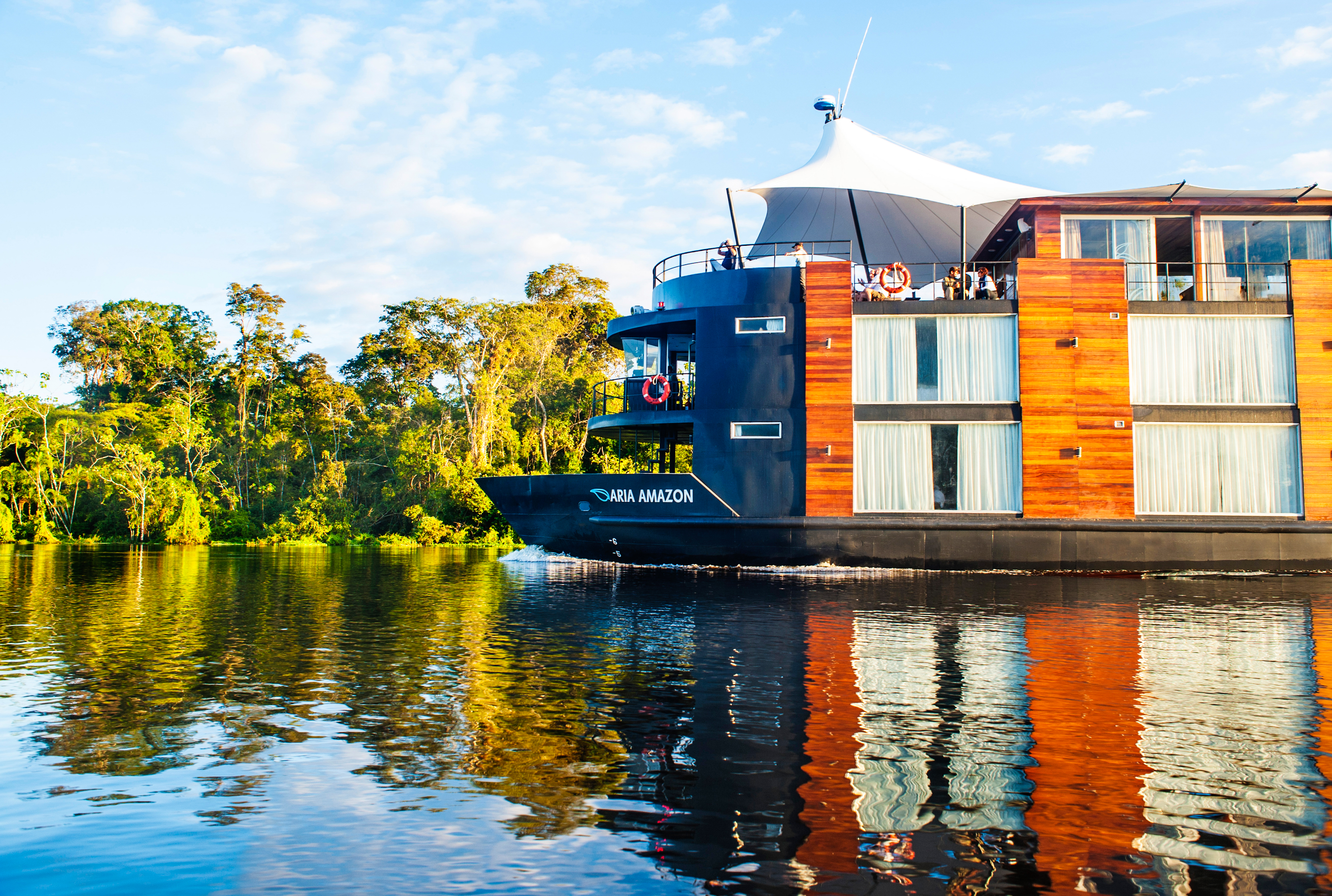
WHAT TO TAKE
Pack a head torch for getting around your lodge at night, when often the dim glow of kerosene lamps provides the only lighting. Mosquitoes are a real pest throughout most of the Amazon (with the notable exception of black water areas such as the Rio Negro in Brazil), so bring whatever repellent you find the most effective as well as long-sleeved shirts and long trousers to protect you from bites. Don't forget your binoculars – your guide will bring a pair on every excursion but it's best to have your own so that you don't miss any precious wildlife sightings while waiting for your turn to use them. Waterproofs and a hat are also essentials. Lodges will provide wellies so you don't need to bring your own (worth checking though if you are an unusual size), but take walking boots for excursions and a pair of sandals for strolling around your lodge or cruise boat. Basic toiletries will be provided but if bringing your own, wherever possible choose biodegradable or environmentally friendly products as your shower water for example will probably be draining straight into the river.
Only take with you what you need, but be sure to factor in at least one extra change of clothes per day as you'll often come back from excursions soaking wet and the intensely humid conditions mean that nothing properly dries. Choose natural, breathable fabrics in light, neutral shades (bright colours can scare off wildlife and dark colours attract insects). It's well worth buying a cheap waterproof bag to make sure your camera and any other important items stay dry; plastic zip-lock bags are also handy.
OUR EXPERTS' PERSONAL RECOMMENDATIONS
If I was going on an Amazon holiday tomorrow I would choose the Tucano cruise – a remote and authentic voyage through the heart of the Brazilian Amazon. There is something really quite special about exploring the Amazon on water, perhaps because the river is the lifeblood of the rainforest and everything that grows, lives and dies within its enveloping emerald depths. Manaus is by far the most iconic of all Amazon cities and an intriguing starting point: it's an economic powerhouse occupying an incongruously isolated position in the middle of the boundless rainforest.
I would probably most recommend our Tambopata package, which starts with a night at the Refugio Amazonas followed by two nights in the remote primary rainforest at the Tambopata Research Centre, where the highlight is visiting the world's largest clay lick to see flocks of parrots gather in an extraordinary burst of colour. This relatively inaccessible area offers better wildlife spotting and indeed as the name suggests it is a centre for the study of the rainforest – you're likely to spend dinner times chatting with researchers and learning about conservation initiatives, feeling very far removed from the outside world. The final night is spent in the more comfortable Posada Amazonas before heading back to Puerto Maldonado. Travelling between the lodges gives a real sense of adventure and each journey is a highlight in its own right. However if I was planning a holiday for myself I would be tempted to choose the Ecuadorian Amazon as I could then combine it with a cruise around the Galápagos Islands – could there be a more perfect trip for a wildlife lover?
Generally speaking, I'd say Puerto Maldonado (Tambopata) is the most accessible area and offers the best value, with a wide variety of full board accommodation and great guides. However having been lucky enough to experience Manú National Park for myself, if money were no object I would have no hesitation in going back overland to this more remote region. The first night is spent in the cloud-forest before reaching the lowland jungle and your accommodation at the Manú Learning Centre. It's basic but the feeling of being in such undisturbed wilderness is incomparable. There's an option to continue on even further to Romero Lodge which is certainly worth the extra money if you can stretch to it – jaguar sightings are common and we managed to spot one on my trip. Finishing up in the more comfortable Manu Wildlife Centre is a great way to end the journey on a high point in the standard of accommodation. In the end though, whichever area you choose, the Amazon provides the ultimate contrast on a holiday in Peru.
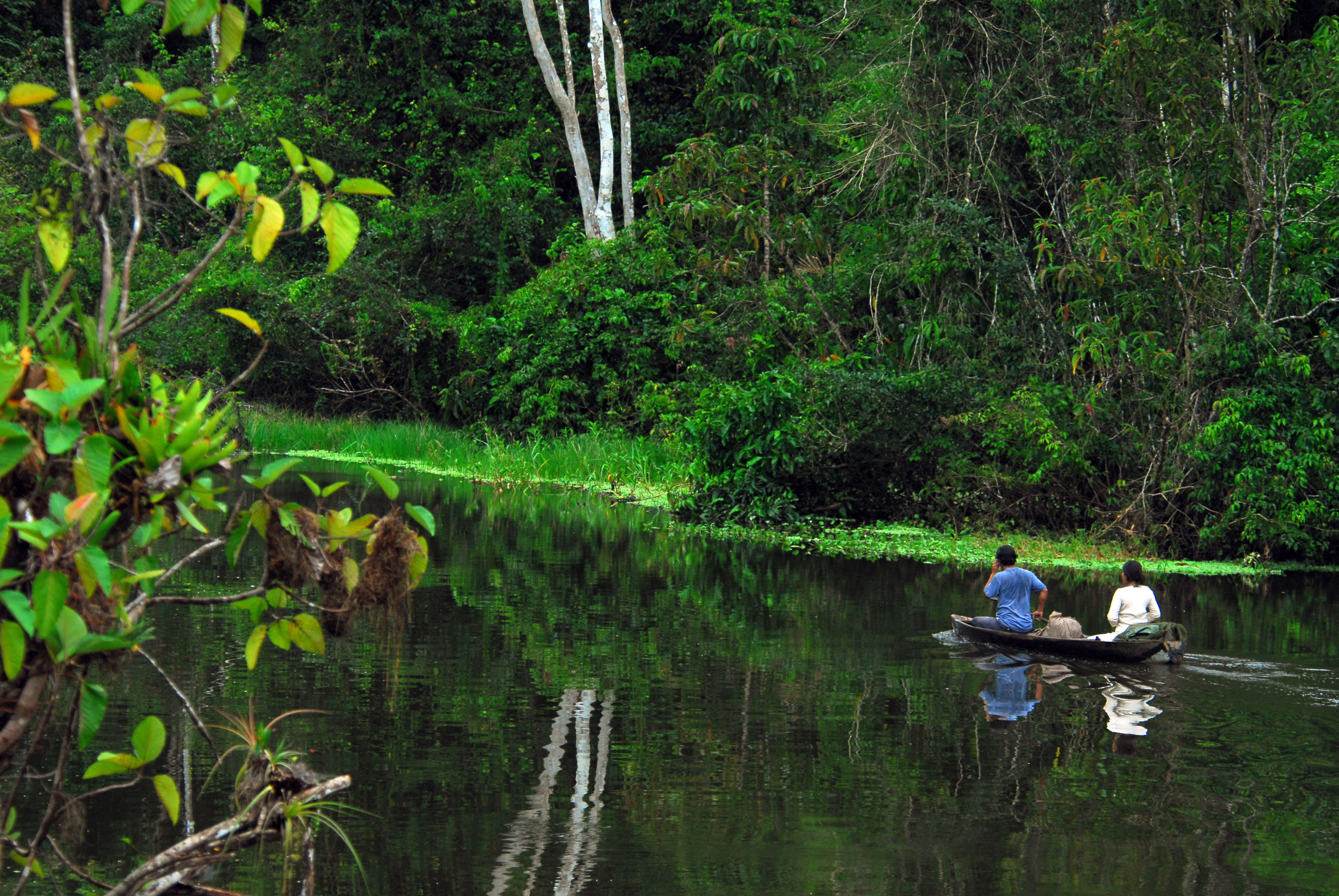
Tailor-made holidays
Flexible, custom-made holidays to Latin America created to match your exact requirements: our tailor-made itineraries are as unique as the clients for whom they are designed.
Design my tripPapagaio
Your edit for Latin American inspiration
Our exciting range of articles on Latin America explore everything from iconic destinations and lesser-known cultural gems to delicious traditional recipes. You’ll also find exclusive travel tips, first-hand client reviews and the chance to get your personal questions answered by our travel experts.
View Extraordinary Inspiration

